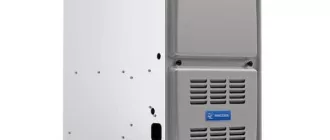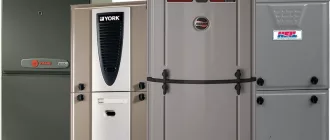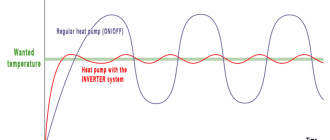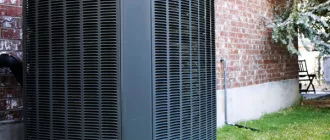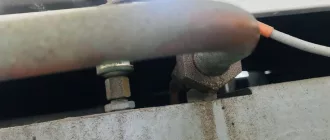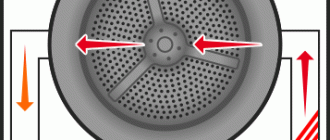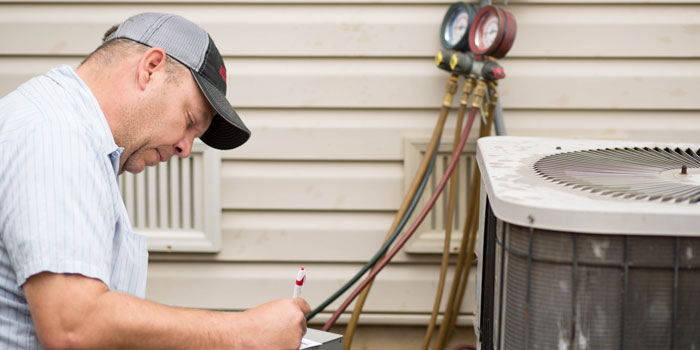
Furnace Issue: Emergency or Not?
Thermostat issues, repair or not, can create a lot of confusion for homeowners, especially during the cold winter months. It’s important to be able to differentiate between a minor issue that can be easily fixed and a major emergency that requires immediate attention. Knowing how to identify and address furnace problems can save you from unnecessary stress and expenses. In this article, we will discuss some common furnace issues and provide guidance on whether they constitute an emergency or not.
One common furnace issue that homeowners face is a problem with heating ignition. If your furnace is not igniting properly, it can lead to a lack of heat in your home. This is a situation that requires immediate attention as it can impact your comfort and safety during colder temperatures. Ignition issues can be caused by various factors, such as a faulty pilot light or a malfunctioning ignition switch. It is important to contact a professional technician to diagnose and repair the problem promptly.
On the other hand, some furnace issues may not be emergencies and can be resolved with regular maintenance. For example, if you notice that your furnace is making strange noises or there is a slight delay in the heat distribution, it may not require immediate attention. These issues could be attributed to a dirty filter, loose components, or air duct obstructions. Routine maintenance, such as cleaning or replacing the filter and tightening loose parts, can often resolve these problems. However, it is still recommended to have a professional inspect your system to ensure there are no underlying issues.
In conclusion, it is crucial to be able to determine whether a furnace issue is an emergency or not. While problems with heating ignition should be treated as emergencies and addressed immediately, other issues may not require immediate attention and can be resolved through regular maintenance. It is always wise to consult a professional HVAC technician to accurately diagnose the problem and provide the necessary repairs or maintenance to ensure the optimal performance of your furnace.
Common Furnace Problems
When it comes to owning a furnace, there are several common problems that homeowners may encounter. Understanding these issues can help determine if a repair is needed or if it’s simply a matter of regular maintenance.
One common issue is a malfunctioning thermostat. If the thermostat isn’t properly calibrated or is faulty, it can lead to inconsistent heating or an inability to heat the home at all. This can be a frustrating problem, but it often doesn’t require emergency repair.
Another common problem is an ignition issue. If the furnace is not igniting correctly or if the pilot light keeps going out, it can cause the heating system to fail. This is usually not an emergency situation, but it does require prompt attention to prevent further damage.
Regular maintenance is essential to keep a furnace running smoothly, but sometimes problems can still arise. Some issues may include dirty filters, which can reduce airflow and cause the furnace to work harder, or a malfunctioning blower motor, which can result in poor heating performance. These problems can often be resolved with routine repairs.
While some furnace problems may require immediate attention, not all issues are emergencies. It’s important to evaluate the severity of the problem and understand when a repair is necessary. Regular maintenance and addressing problems promptly can help ensure that your heating system operates efficiently throughout the winter.
Identifying the Issue
When faced with a potential furnace issue, it is important to determine whether it is an emergency or not. Understanding the problem can help you decide whether immediate action is needed or if it can wait.
One common issue with furnaces is a lack of heating. If you find that your furnace is not producing enough heat or is not turning on at all, this could be a sign of a problem. Before assuming it is a major issue, check your thermostat to ensure it is set to the desired temperature. Sometimes, a simple adjustment of the thermostat can solve the problem.
If the thermostat is not the issue, the next thing to check is the ignition system. Furnaces typically use either a pilot light or an electronic ignition system. If the pilot light is out or the ignition system is malfunctioning, it can prevent the furnace from heating your home. In these cases, it may be necessary to relight the pilot light or call a professional for repair.
Regular maintenance can also help to prevent furnace issues. Routine check-ups and cleanings can identify potential problems before they become major issues. If you have not had your furnace serviced recently, it is worth scheduling a maintenance appointment to ensure it is functioning properly.
When facing a furnace issue, it is important to determine whether it is an emergency or not. While some issues may require immediate attention, others can be handled with regular maintenance or minor repairs. Understanding the cause of the problem can help you decide on the appropriate course of action to take.
Strange Noises
If you start hearing strange noises coming from your furnace, it is important to address the issue as soon as possible. While some noises may not be cause for immediate alarm, they could indicate a problem that will require repair or maintenance to prevent further damage.
One common noise that should not be ignored is a loud banging or popping sound. This could be a sign of a fuel ignition issue, which can cause a dangerous buildup of gas in your furnace. If you hear this noise, it is important to turn off your furnace and contact a professional immediately.
Another noise to be aware of is a constant squealing or screeching sound. This could indicate a problem with the blower motor or belt, and should be addressed by a professional to prevent further damage to your furnace.
If you hear a rattling noise, it could be a simple fix such as a loose panel or screw. However, if the rattling is accompanied by a loss of heat, it could be a more serious issue with the furnace’s internal components that will require professional repair.
While some noises may not require immediate attention, it is always best to err on the side of caution when it comes to your furnace. If you are unsure whether a noise is an emergency or not, it is best to contact a professional HVAC technician who can assess the situation and provide the necessary repairs or maintenance.
No Heat
If you turn on your furnace and there is no heat coming out, it is definitely an issue that needs to be addressed. This can be considered an emergency, especially during cold winter months when heating is essential for comfort and safety.
The first thing you should check is the thermostat. Make sure it is set to the desired temperature and is in the heating mode. If the thermostat seems to be working fine, then the problem might lie with the furnace itself.
There could be a problem with the ignition system of your furnace. If the pilot light is not lit or the electronic ignition is not working properly, it could prevent the furnace from producing heat. In this case, it is best to call a professional HVAC technician to diagnose and fix the issue.
Regular maintenance is crucial to avoid such issues. Furnaces should be inspected and cleaned annually to ensure proper functioning. Ignoring maintenance can lead to more serious problems and even costly repairs in the long run.
If you are experiencing a no heat situation with your furnace, it is not something you should ignore or delay addressing. It is important to act quickly to restore heating in your home and prevent further damage to the furnace.
Intermittent Heat
One common furnace issue is intermittent heating. This occurs when the furnace heats up for a period of time but then stops working, leaving you without heat. It can be frustrating and uncomfortable, especially during cold winter months.
There are several possible causes for intermittent heat. One common cause is a faulty thermostat. If the thermostat is not properly calibrated or is malfunctioning, it may turn off the furnace prematurely or fail to turn it on when needed. In this case, you may need to have the thermostat repaired or replaced.
Another potential cause of intermittent heat is a problem with the ignition system. If the ignitor or pilot light is not functioning properly, it may cause the furnace to shut off before reaching the desired temperature. This can be a more serious issue and may require professional repair.
If you are experiencing intermittent heat, it is important to address the issue as soon as possible. While it may not be a full-blown emergency, it is important to have a professional inspect and repair your furnace to avoid further issues and ensure that you have consistent and reliable heating.
Weak Airflow
One common issue that homeowners may experience with their furnace is weak airflow. Weak airflow can be frustrating as it can lead to inadequate heating in your home.
If you notice that the air coming out of your vents is weaker than usual, it’s important to address the issue promptly. While weak airflow may not necessarily constitute an emergency, it could indicate a problem with your furnace that requires attention.
There are several possible causes for weak airflow, including a clogged or dirty air filter, blocked ductwork, or a malfunctioning blower motor. These issues can prevent the warm air from circulating properly throughout your home, resulting in reduced comfort and increased energy consumption.
To resolve weak airflow, you can start by checking and replacing the air filter if necessary. A clogged or dirty filter can restrict airflow, so regular maintenance and cleaning are essential. Additionally, make sure that all vents and registers in your home are open and free from obstruction.
If addressing these basic maintenance tasks doesn’t improve the airflow, it’s advisable to contact a professional HVAC technician for further inspection and repair. They can diagnose any underlying issues with your furnace, such as a faulty blower motor or ductwork obstruction, and provide the necessary repairs.
Regular furnace maintenance is crucial in ensuring proper airflow and preventing potential issues. Scheduling annual maintenance checks with a professional can help identify and address any problems before they worsen. Additionally, ensure that your thermostat is set correctly and functioning properly, as an incorrect temperature setting can also affect the airflow.
In conclusion, weak airflow from your furnace is not always an emergency, but it is an issue that needs attention. Promptly addressing weak airflow can help ensure the comfort and efficiency of your heating system and prevent potentially costly repairs in the future.
Poor Indoor Air Quality
Poor indoor air quality can be a major issue for homeowners, especially during the winter months when the heating system is in use. While it may not always be considered an emergency, it is definitely a problem that needs to be addressed.
One of the most common causes of poor indoor air quality is a dirty or clogged furnace filter. When the filter is not regularly cleaned or replaced, it can become filled with dust, debris, and other particles that can circulate throughout the home when the furnace is running. This can lead to allergies, respiratory issues, and other health concerns for those living in the house.
If poor indoor air quality is affecting your household, it is important to take action. Start by checking and cleaning or replacing the furnace filter. This simple maintenance task can make a big difference in the air you breathe indoors. Additionally, consider investing in an air purifier or installing a whole-house ventilation system to help improve air circulation and filtration.
In some cases, poor indoor air quality may be a sign of a more serious issue with the furnace. Issues such as a malfunctioning ignition system or a faulty thermostat can result in incomplete combustion, leading to the release of harmful gases like carbon monoxide. If you suspect a problem with your furnace that is affecting air quality or safety, it is important to contact a professional as soon as possible.
In summary, while poor indoor air quality may not always be an emergency, it is a heating issue that should not be ignored. Regular furnace maintenance, including cleaning or replacing filters and investing in air purifiers or ventilation systems, can help improve indoor air quality and ensure the health and safety of your home.
Pilot Light Ignition Problems
One common issue that homeowners may encounter with their furnace is problems with the pilot light ignition. The pilot light is a small flame that is constantly burning and is responsible for igniting the gas that heats the furnace.
If you notice that your furnace is not producing any heat or you can’t hear the familiar “whoosh” sound when it turns on, it’s possible that there is a problem with the pilot light ignition. This issue can vary in severity, so it’s important to determine if it’s an emergency or if it can wait for regular maintenance or repair.
In some cases, the pilot light may simply need to be relit. However, if you’re unsure of how to do this safely or if the pilot light keeps going out after being relit, it’s best to contact a professional for assistance. Ignoring the issue or attempting to fix it yourself can be dangerous and may lead to further damage to your furnace.
In other cases, the pilot light may not be igniting due to a more complex issue with the furnace’s ignition system. This could be caused by a faulty thermocouple, a clogged gas line, or a malfunctioning ignition switch. These problems may require professional repair or replacement.
It’s important to note that a malfunctioning pilot light ignition can potentially be a fire hazard or pose a risk of carbon monoxide poisoning. If you smell gas or suspect a gas leak, it’s crucial to evacuate your home immediately and contact your local gas company or emergency services.
| – Furnace not producing heat |
| – No “whoosh” sound when furnace turns on |
| – Pilot light repeatedly going out |
| – Smell of gas or signs of a gas leak |
In conclusion, pilot light ignition problems can range from a simple issue that can be resolved by relighting the pilot light to more complex problems that require professional repair. It’s important to assess the severity of the issue and determine if it’s an emergency or if it can wait for routine maintenance or repair.
Frequent Cycling
Frequent cycling is a common furnace issue that can occur for a variety of reasons. While it may not necessarily indicate an emergency, it is still important to address and repair the issue promptly to avoid further damage to the furnace.
The most common cause of frequent cycling is a malfunctioning ignition system. If the furnace is not igniting properly, it may repeatedly attempt to ignite and then shut off, causing the furnace to cycle on and off frequently. This can be due to a faulty ignition switch, a clogged ignition sensor, or a problem with the gas supply.
Another potential cause of frequent cycling is an issue with the thermostat. If the thermostat is not functioning properly, it may incorrectly sense the temperature in the room and cause the furnace to turn on and off more frequently than necessary. This can be resolved by recalibrating or replacing the thermostat.
In some cases, frequent cycling can also be a result of poor maintenance. A dirty air filter or a lack of regular maintenance can cause the furnace to overheat, leading to frequent cycling. This can be remedied by cleaning or replacing the air filter and scheduling regular maintenance for the furnace.
While frequent cycling may not always be an emergency, it is still important to address the issue promptly to prevent further damage and ensure the proper functioning of the furnace. If you are unsure about the cause of the frequent cycling or if other issues are present, it is recommended to contact a professional HVAC technician for assistance.
| Furnace turning on and off frequently | Malfunctioning ignition system | Repair or replace ignition switch, clean ignition sensor, check gas supply |
| Frequent temperature fluctuations | Issue with thermostat | Recalibrate or replace thermostat |
| Overheating and short cycling | Poor maintenance, dirty air filter | Clean or replace air filter, schedule regular maintenance |
Uneven Heating
Uneven heating in your home can be a frustrating issue, especially during the cold winter months. It can make certain areas of your home feel too hot while others remain cold. However, determining whether this is an emergency or not will depend on several factors.
One possible cause of uneven heating is a problem with the ignition in your furnace. If the furnace is not igniting properly, it can result in insufficient heating in certain areas of your home. This is a repair that should be addressed as soon as possible, especially if it is accompanied by strange noises or odors coming from the furnace.
Another common culprit of uneven heating is a faulty thermostat. If your thermostat is not functioning correctly, it may not be accurately measuring the temperature in your home and adjusting the heating accordingly. This can lead to areas of your home being too warm or too cold. While this may not be an emergency, it is still an issue that should be resolved to ensure proper and comfortable heating throughout your home.
In some cases, uneven heating may not be an emergency but rather a result of poor insulation or ductwork in your home. If the insulation in certain areas is lacking or if there are leaks in the ductwork, it can cause heat to escape, resulting in uneven heating. While this may not require immediate attention, addressing these issues can help improve the overall efficiency of your heating system and prevent further problems in the future.
If you are experiencing uneven heating in your home, it is important to assess the severity of the issue and determine whether it requires immediate attention or not. Consulting with a professional HVAC technician can help diagnose the problem and provide the necessary repair or maintenance to ensure proper heating throughout your home.
Thermostat Malfunctioning
One common issue that can cause problems with a furnace is a malfunctioning thermostat. The thermostat is responsible for regulating the temperature in your home and communicating with the furnace to turn on the ignition and initiate the heating process. If the thermostat is not working properly, it can lead to issues with the furnace.
A thermostat malfunction can range from a minor inconvenience to a more severe problem. In some cases, a simple adjustment or battery replacement may resolve the issue. However, if the thermostat is completely unresponsive or displaying incorrect temperatures, it may require professional attention.
While a malfunctioning thermostat is not always an emergency, it can impact the performance and efficiency of your furnace. If the temperature in your home is significantly different from what is set on the thermostat, it can make your living space uncomfortable and may even lead to higher energy bills. It’s important to address thermostat issues promptly to ensure your furnace operates effectively.
Regular maintenance is essential in preventing thermostat malfunctions. Routine cleanings and inspections can help identify and resolve any potential issues before they become major problems. Additionally, it’s important to replace your thermostat periodically to ensure it remains accurate and reliable.
Emergency Furnace Issues
In some cases, furnace issues can be classified as emergencies, requiring immediate attention and repair. These emergencies typically involve situations where the furnace poses a threat to the safety and well-being of the occupants.
1. No heating: If your furnace is not providing any heat or the temperature drops significantly, especially during colder months, it can be considered an emergency. Lack of heating can lead to discomfort and potential health risks, particularly for vulnerable individuals such as the elderly or young children.
2. Gas leak: A gas leak from your furnace is a serious emergency. Natural gas is highly combustible and poses a significant safety risk. If you suspect a gas leak, it’s crucial to immediately evacuate the premises and call the emergency services or your local gas company.
3. Blower motor not working: If the blower motor is not functioning, it can hinder the proper distribution of heat throughout your home. This can result in uneven temperatures and discomfort. In extreme cases, it may even cause the furnace to overheat, leading to potential damage or fire hazards.
4. Ignition problems: Furnaces that have ignition issues, such as a faulty pilot light or electronic igniter, can pose a safety risk. If the ignition is not working correctly, it can prevent the furnace from starting up or cause it to shut down unexpectedly, leaving you without heat.
5. Thermostat malfunctions: A malfunctioning thermostat can result in inconsistent heating, constant cycling, or failure to turn on the furnace. If you are unable to control the temperature or the thermostat displays incorrect readings, it may be an emergency situation that requires immediate attention.
If you experience any of these emergency furnace issues, it is advisable to contact a professional HVAC technician promptly. They will be able to assess the problem, provide necessary repairs, and ensure the safety and functionality of your furnace system.
No Heat in Extreme Cold
If you find yourself without heat in extreme cold weather, it can be a very serious issue that requires immediate attention. While some furnace problems can be resolved with routine maintenance or repair, a complete lack of heating in frigid temperatures is an emergency situation.
The lack of heat can be caused by various issues, such as a malfunctioning thermostat, a broken ignition system, or a major furnace breakdown. In extreme cold weather, the temperature inside your home can drop rapidly and pose a serious health risk, especially for vulnerable individuals like children, the elderly, or those with medical conditions.
It is crucial to take swift action in such situations to ensure the safety and well-being of your household. Here are a few steps you can take:
| 1. Check your thermostat: | Make sure your thermostat is set to a temperature that should be providing heat. Check the batteries if your thermostat is battery-operated, and ensure it is functioning properly. |
| 2. Inspect the furnace: | If your thermostat seems to be working fine, inspect the furnace for any visible signs of damage or malfunction. Look for things like loose wires, broken components, or any unusual noises or odors. |
| 3. Call for emergency furnace repair: | If you have performed the above checks and cannot identify the issue, it is crucial to contact an emergency furnace repair service immediately. They have the expertise to quickly diagnose and fix the problem so that heat can be restored to your home. |
| 4. Protect yourself and your family: | While waiting for the repair technician to arrive, it is important to take steps to keep yourself and your family warm. Bundle up in warm clothing, use extra blankets, and consider moving to a specific room or area with alternative heating sources, such as a fireplace or space heater. |
Remember, having no heat in extreme cold weather is not a situation to be taken lightly. It is always better to treat it as an emergency and take immediate action to ensure the safety and comfort of your household.
Smell of Gas
If you notice a strong smell of gas coming from your furnace, it is important to treat it as an emergency situation. Natural gas is highly flammable, so any issue with the gas supply or ignition system could potentially cause a dangerous situation.
The first thing you should do is turn off the furnace immediately. Locate the emergency shut-off valve or the main gas supply valve and turn it to the “off” position. This will help minimize the risk of a gas leak and potential fire or explosion.
After shutting off the furnace, it is recommended to open windows and doors to ventilate the area. This will help dissipate the gas fumes and reduce the risk of inhaling dangerous gases.
Next, you should contact a professional heating technician to inspect and repair the furnace. A gas smell could indicate a gas leak or an issue with the ignition system, and it requires immediate attention from a qualified technician. Do not attempt to repair the furnace yourself, as it could be a safety hazard.
In the meantime, it is important to avoid using any electrical appliances or open flames in the vicinity of the furnace. This includes turning off any nearby thermostats and avoiding lighting cigarettes or matches. These actions can potentially ignite the gas and cause a fire or explosion.
In conclusion, if you smell gas coming from your furnace, consider it an emergency situation and take immediate action. Turn off the furnace, open windows and doors for ventilation, and contact a professional technician for repair. It’s better to be safe and address the issue promptly to prevent any potential risks or dangers.
Carbon Monoxide Leak
One of the most dangerous issues that can arise with a furnace is a carbon monoxide leak. Carbon monoxide is a colorless and odorless gas that can be extremely harmful if inhaled. It is produced when fuel, such as natural gas or oil, is not burned completely. A malfunctioning thermostat, cracked heat exchanger, or faulty ignition system can contribute to a carbon monoxide leak.
Detecting a carbon monoxide leak in your home can be challenging since the gas is undetectable without proper equipment. However, there are some signs that can indicate a carbon monoxide problem, such as a yellow or orange flame instead of a blue flame, a lingering smell of gas, or physical symptoms like nausea, dizziness, or headaches.
If you suspect a carbon monoxide leak, it is crucial to take immediate action as it is considered an emergency. The first step is to evacuate everyone from the house and get to fresh air. Next, call emergency services or your local fire department to report the issue. They will be able to assess the situation and determine the source of the leak.
To prevent carbon monoxide leaks, regular maintenance and inspection of your furnace are essential. Hiring a professional HVAC technician to perform annual tune-ups can help identify and address any potential issues before they become a threat. Additionally, make sure to install carbon monoxide detectors throughout your home and regularly check their batteries to ensure they are in working condition.
| – Yellow or orange flames instead of blue flames | – Annual furnace maintenance and inspection |
| – Lingering smell of gas | – Installing carbon monoxide detectors |
| – Nausea, dizziness, or headaches | – Regularly checking detector batteries |
Remember, a carbon monoxide leak is a severe emergency that requires immediate attention. Taking proactive measures to prevent such leaks and scheduling regular furnace maintenance can help keep you and your family safe.
Q&A:
What should I do if my furnace stops working suddenly?
If your furnace stops working suddenly, first check if the circuit breaker is tripped. If it is not, then check the thermostat and make sure it is set to the desired temperature. If the problem persists, it is best to contact a professional technician to diagnose and fix the issue.
How can I tell if my furnace issue is an emergency or not?
If your furnace issue poses a safety risk or causes major discomfort, it can be considered an emergency. Examples of emergency furnace issues include gas leaks, carbon monoxide leaks, or if the furnace stops working in extreme weather conditions. In such cases, it is crucial to contact an emergency HVAC service immediately.
What are some common signs that my furnace needs repair?
Some common signs that indicate your furnace needs repair include strange noises coming from the furnace, uneven heating throughout your home, frequent cycling or short cycling, a sudden increase in energy bills, or a yellow flame instead of a blue one. If you notice any of these signs, it is recommended to have your furnace checked by a professional.
Is it normal for my furnace to produce a burning smell when it starts?
It is normal for a furnace to produce a slight burning smell when it starts after a long period of inactivity. This odor is usually caused by the accumulation of dust on the heating elements. However, if the burning smell persists or becomes strong, it can indicate a more serious issue, such as a faulty electrical component or a problem with the ventilation system. In such cases, it is best to turn off the furnace and contact a professional for inspection.
How often should I schedule regular maintenance for my furnace?
It is recommended to schedule regular maintenance for your furnace at least once a year. Regular maintenance helps ensure that your furnace is functioning properly, improves its energy efficiency, and extends its lifespan. It is best to schedule maintenance in the fall before the heating season starts to ensure that your furnace is ready for the colder months.
What should I do if my furnace stops working?
If your furnace stops working, the first thing you should do is check if your thermostat is set to the correct temperature. Also, make sure that the circuit breaker for your furnace is on. If these simple checks don’t solve the problem, you should contact a professional HVAC technician to diagnose and fix the issue.

